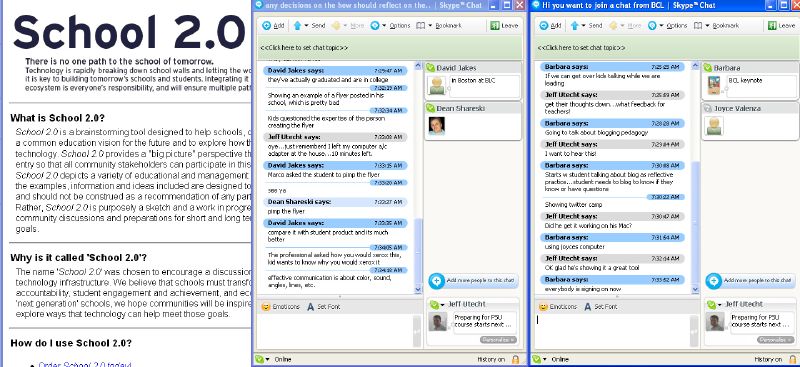 Is this going to be the year when things in Educational Technology (EdTech) finally hit critical mass and begin to change the way teachers teach and students learn? The predominate EdTech bloggers (Will Richardson, Wesley Fryer, David Warlick, et al) have been espousing this for the past year, but is there any concrete evidence that this year is going to be any different than previous years?
Is this going to be the year when things in Educational Technology (EdTech) finally hit critical mass and begin to change the way teachers teach and students learn? The predominate EdTech bloggers (Will Richardson, Wesley Fryer, David Warlick, et al) have been espousing this for the past year, but is there any concrete evidence that this year is going to be any different than previous years?Will has two blog posts from the Building Learning Communities (BLC) conference in Boston this week and they are evident that the status quo is changing, but maybe not at the rate that some would like it to. (Learning at BLC)(BLC Day 1 -Brain Dump) I thought the most telling piece of the 'Learning at BLC' post was the reaction of Marco Torres' students about the learning behaviors of the attendees. The students couldn't understand how teachers were 'passive' in their learning behaviors; sitting in rows listening to presenters and asking the students for technical assistance. Although the other interesting thing about the post is that really struck me was the fact that Will said he was "basically chucking the script because it just didn’t feel relevant." To me this was 'evolutionary' because it was Will's professional admission that the 'conversation' or the 'synergy' of ideas between those involved was more important than the straight 'lecture' format of conferences. (Two-way vs. One-way) So, do we know where we are going?
Can we anticipate what the future holds and create a path that will allow the educational community to intersect it at some point in the near future? Wesley Fryer, in one of his posts quotes a Wired Magazine article about the fact that the innate ability to 'anticipate' actions comes from 'unstructured play' and the ability to pick up on subtle environmental cues. The example they give is of Wayne Gretzky and the amount of unstructured play he was able to engage in with his friends in his back yard. Is the difference between digital natives and digital immigrants the amount of time that kids have in 'unstructured play' with the technologies, so as new technologies are introduced, kids have the innate ability to 'anticipate' on how to use them?
To make the next leap... if we are going to plot a point where the technologies of tomorrow and education are going to intersect, we need take a good look at where business technologies are going right now and what educational applications do we see in these technologies? The graphic below is the current state of the Read/Write Web or Web 2.0. There are two things that I believe are the most telling in this graphic. The first is the fact that there are forcasts for the future of different firms and identification of which level (Web 1.0, Web 1.5 or Web 2.0) of technology the firm engages in. The second thing that really struck me was that Google is entangled, emeshed or the basis of many of the new and emerging technologies. (Click on the graphic to get full size view.)
So, the question to teachers now becomes (Borrowing freely from Sean Connery in 'The Untouchables') what are you prepared to do now?

No comments:
Post a Comment